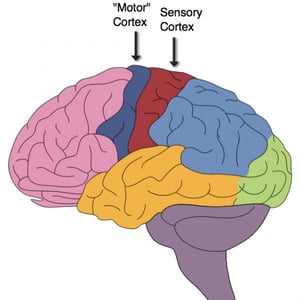Tightening your abdominal muscles to strengthen your core does not relieve chronic back pain. It is...
Are Your Favorite Activities Actually Causing You Pain?
It may be hard to believe, but some of the activities that you love may actually be causing you pain.
The Learning Process
To understand pain, it is essential to understand the learning process of the brain. When we learn a new thing, we naturally break the process down step by step. We start slowly and use the cortex of our brain to pay attention to the activity we are learning. Our brain learns by sensing and feeling and repetition. As we continue to refine and adapt, the movement graduates from being unfamiliar and unnatural to familiar and natural. This is the process of habituation. This is how we learn and develop all life skills.
Learning to Drive
Think about learning how to drive a car, for example. When you got your learner’s permit and started driving, you had to sequentially and intentionally think about every step in the learning process.
You got in the car, closed the door. Next, you learned to adjust your mirrors to the right height. Then you put on your seatbelt. Next, you put the key into the ignition, put your foot to the brake, and then put the car into gear.
You checked to see if the roadway was clear, took your foot off the brake, and put it in on the gas pedal. You pressed the foot down.
But, if you pushed the pedal too hard, the car would jolt. And so you had to learn how to press with a gentle acceleration of pressure.
You had to consciously think, step by step, about each aspect of driving. Your brain was learning the whole time.
All of these actions required you to actively use the cortex of your brain, where, one step at a time, you learn new information.
And then, through conscious repetition, your efficiency improves, and the steps became automatic and habitual.
And now, 4-10-50 years later, driving is likely a very habituated movement for all of us.
The Most Important Part

With practice and learning, driving skills have become entirely automatic and involuntary. The subcortex of the brain has taken over and now manages this complex series of steps to efficiently get us from point A to B, requiring significantly less conscious thought.
This a great example of habitation and the learning process, from cortex to subcortex, voluntary to involuntary.
And every time we learn something new, whether it is good for us or bad for us, this process happens again.
The truth is the brain cannot distinguish between good input and bad input. As a result, sometimes the activities you love to do repetitively may actually be causing you pain.
Take a Look at Some Examples:
The more we slouch forward and sit in a poor posture, the more our brain learns to keep our muscles in this pattern, and over time, it becomes harder to sit up straight. This leads to slumped posture, affecting breathing and blood flow, greater compression on joints and the digestive system, neck tension, and other common health ailments.
And how about your favorite activities? We train specific muscles to perform repeatedly and successfully by doing the same physical exercise day in and day out, week after week. This could be the same yoga class sequence, a one-sided golf swing, or going for a daily walk or hike but never doing any inquiry to ensure the correct muscles are working.
Give some thought to how these repetitive actions and activities you love may actually be causing you pain.
 Consider hiking. Hiking is an activity that requires propulsion from the back line muscles. Within a millisecond of getting ready to take your first step, your back muscles engage. Someone who is an avid walker or hiker might report having tight hips or lower back pain.
Consider hiking. Hiking is an activity that requires propulsion from the back line muscles. Within a millisecond of getting ready to take your first step, your back muscles engage. Someone who is an avid walker or hiker might report having tight hips or lower back pain.
Consider the way the brain learns to recruit the muscles for hiking and how this engagement for miles and miles over time, means that the brain has to think about the action less and less. Those muscles get tight from repetitive use and can stay tight, even when we are no longer doing the activity.
Isn’t it common for hikers to report being tight in their lower back, glutes, and hamstrings? Can you see the activity of hiking may actually be causing you pain?
The final example is how habituation results from doing less. As we get older, we move less. We sit more, watch TV more, and move in more repetitive patterns or motions, often because we are afraid to move more and injure ourselves. This repetition of habituated inactivity is what gets us into trouble. It can create pain and tension patterns in our bodies.
Learning more about somatic movement and how your muscles are performing can help you become more aware of the ways you have become habituated in your movements, mindset, and behaviors. It will provide you with simple and easy exercises that you can do daily that release these tension patterns, creating freedom, joy, and well-being for healthy aging.






